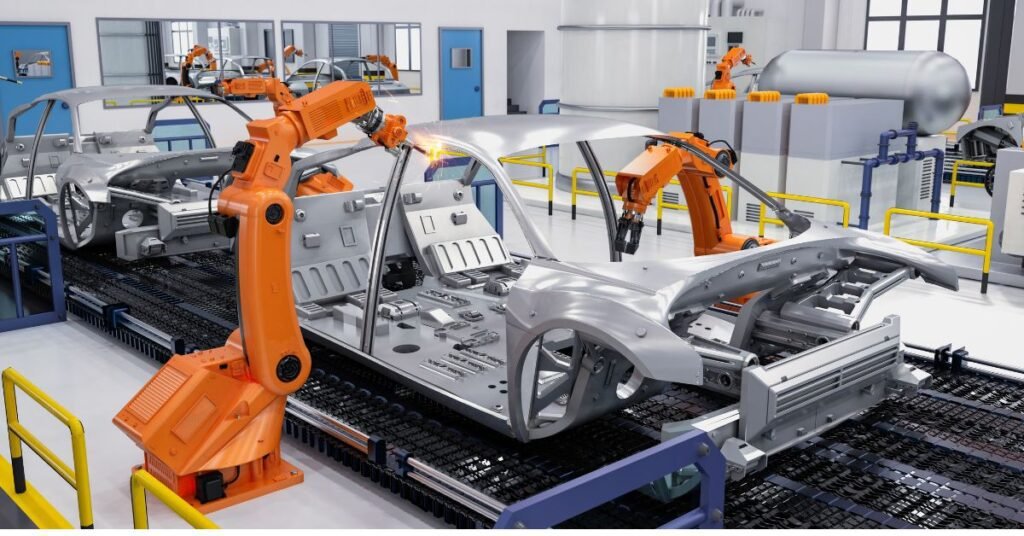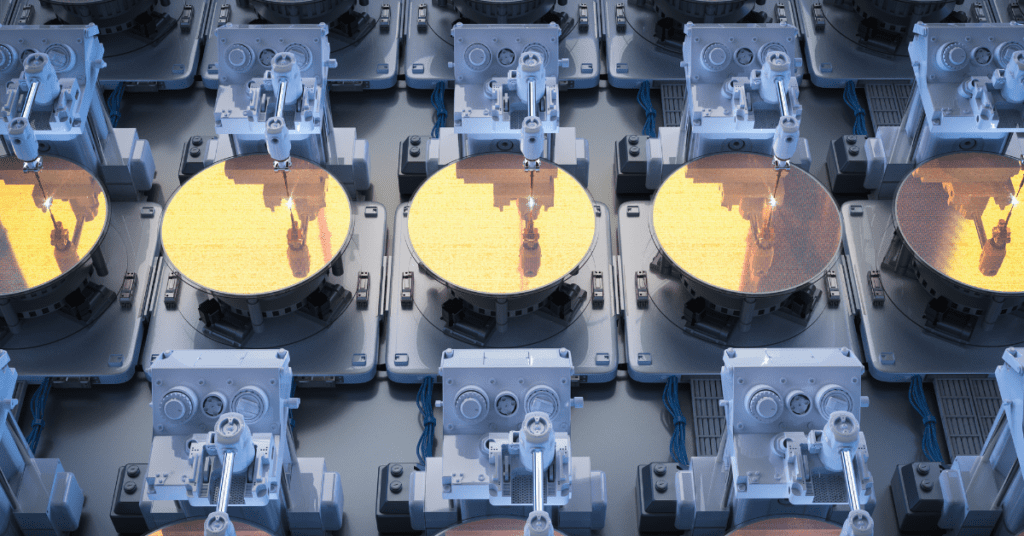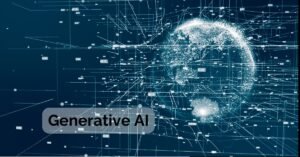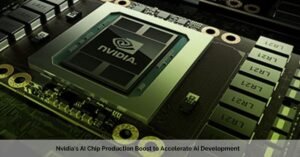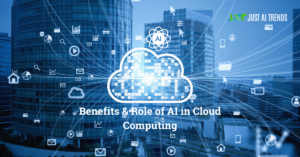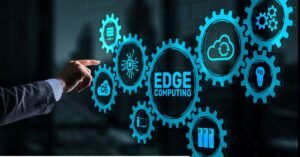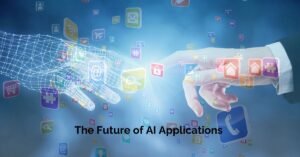Artificial Intelligence (AI) is reshaping industries worldwide, and manufacturing is no exception. The integration of AI technologies is driving unprecedented efficiency, productivity, and innovation in manufacturing processes. From predictive maintenance to quality control, AI is transforming how products are conceived, designed, produced, and delivered.
Understanding AI in Manufacturing
AI in manufacturing refers to the application of artificial intelligence technologies to optimize production processes. It involves leveraging machine learning, robotics, and advanced analytics to enhance efficiency, quality, and flexibility in manufacturing operations.
Essentially, AI is transforming traditional manufacturing into a data-driven, intelligent system.
How Does AI Work in Manufacturing?
AI works by analyzing vast amounts of data generated from various manufacturing processes. This data includes information from sensors, machines, and production lines.
AI algorithms then identify patterns, trends, and anomalies to provide valuable insights. These insights can be used to:
- Predict equipment failures: AI can analyze sensor data to predict when machinery is likely to break down, allowing for scheduled maintenance and preventing costly downtime.
- Optimize production schedules: By analyzing historical data and real-time information, AI can optimize production schedules, reducing waste and improving efficiency.
- Enhance quality control: AI-powered vision systems can inspect products for defects, ensuring consistent quality and reducing the need for manual inspection.
- Improve supply chain management: AI can optimize inventory levels, predict demand fluctuations, and optimize transportation routes, resulting in cost savings and improved delivery times.
Core Components of AI in Manufacturing
Machine learning algorithms enable systems to learn from data without explicit programming. This allows AI systems in manufacturing to continuously improve their performance over time. Here are some common machine learning techniques used in manufacturing:
- Supervised learning: Trains models using labeled data to make predictions for new, unseen data.
- Unsupervised learning: Discovers hidden patterns and structures in unlabeled data.
- Reinforcement learning: Learned through trial and error by interacting with the environment.
AI-powered robots play a crucial role in automating tasks and improving manufacturing efficiency. These robots can be programmed to perform various tasks with high precision and repeatability. Here are some key advantages of AI-powered robots:
- Increased productivity and output
- Improved safety by handling dangerous tasks
- Enhanced flexibility to adapt to changing production needs
Computer vision technology enables machines to ‘see’ and understand visual information. This is crucial for various applications in manufacturing, such as:
- Defect detection: AI-powered vision systems can inspect products for defects with high accuracy.
- Robotic guidance: Vision systems can provide real-time visual feedback to guide robots in performing tasks.
- Process monitoring: Cameras can be used to monitor production processes and identify potential issues.
Natural Language Processing (NLP)
NLP allows machines to understand and respond to human language. While not as widely used in core manufacturing processes, NLP can be beneficial for:
- Human-machine interaction: NLP can enable voice commands or natural language interfaces for interacting with AI systems.
- Data analysis: NLP can be used to analyze text data, such as maintenance reports or customer reviews.
- Document automation: NLP can automate tasks like generating reports or summarizing data.
Combining these core components, AI creates a powerful toolkit for optimizing and transforming manufacturing processes.
Benefits of AI in Manufacturing
AI is revolutionizing the manufacturing industry by offering a multitude of benefits. Here are some key advantages:
Increased Efficiency and Productivity
- Automation of tasks: AI can automate repetitive and time-consuming tasks, freeing up human workers for more complex and strategic roles.
- Optimized production schedules: AI analyzes data to create efficient production schedules, minimizing downtime and maximizing output.
- Reduced errors: AI-powered systems can detect and correct errors in real-time, improving overall product quality.
Enhanced Quality Control
- Defect detection: AI-driven vision systems can identify defects that are invisible to the human eye, ensuring product quality.
- Predictive quality control: By analyzing historical data, AI can predict potential quality issues and implement preventive measures.
Cost Reduction
- Optimized resource allocation: AI can analyze resource usage and identify areas for improvement, leading to cost savings.
- Reduced waste: By optimizing production processes and predicting equipment failures, AI helps minimize waste and material loss.
- Energy efficiency: AI can optimize energy consumption in manufacturing facilities, reducing operational costs.
Improved Decision Making
- Data-driven insights: AI provides valuable insights based on data analysis, enabling informed decision-making.
- Predictive analytics: AI can forecast future trends, allowing businesses to anticipate market changes and adjust strategies accordingly.
Enhanced Supply Chain Management
- Demand forecasting: AI can accurately predict product demand, optimizing inventory levels and reducing stockouts.
- Supply chain optimization: AI can optimize transportation routes, warehouse management, and logistics, improving efficiency and reducing costs.
Increased Safety
- Predictive maintenance: AI can predict equipment failures, preventing accidents and ensuring a safe working environment.
- Workplace safety monitoring: AI-powered systems can monitor workplace conditions and identify potential hazards.
Challenges and Considerations of AI in Manufacturing
While AI offers immense potential for the manufacturing industry, its implementation comes with several challenges and considerations:
Data Quality and Quantity
- Data Availability: Sufficient and high-quality data is essential for training AI models effectively. Many manufacturing processes lack comprehensive data collection systems.
- Data Cleaning: Raw data often contains inconsistencies, errors, and missing values, requiring significant cleaning and preprocessing before it can be used for AI applications.
- Data Privacy: Handling sensitive manufacturing data requires robust security measures to protect intellectual property and customer information.
Cybersecurity
- Vulnerability: AI systems are susceptible to cyberattacks, which can lead to data breaches, system failures, and operational disruptions.
- Protection: Implementing robust cybersecurity measures is crucial to safeguard sensitive manufacturing data and processes.
Workforce Adaptation
- Skill Gap: The integration of AI requires a workforce with skills in data science, machine learning, and AI applications.
- Reskilling: Existing employees may need to be retrained or upskilled to adapt to new roles and responsibilities in an AI-driven environment.
- Job Displacement: Concerns about job losses due to automation are prevalent, requiring careful planning and communication to address these fears.
Initial Investment
- High Costs: Implementing AI solutions involves significant upfront costs for hardware, software, and expertise.
- Return on Investment (ROI): Demonstrating the financial benefits of AI can be challenging, especially in the short term.
Ethical Considerations
- Bias: AI algorithms can perpetuate biases present in the training data, leading to unfair outcomes.
- Transparency: Understanding how AI systems make decisions is crucial for accountability and trust.
- Liability: Determining responsibility for AI-related errors or accidents is a complex legal issue.
Integration Challenges
- Legacy Systems: Integrating AI with existing manufacturing systems and processes can be complex and time-consuming.
- Standardization: Lack of standardized AI platforms and interfaces can hinder interoperability.
Overcoming these challenges requires careful planning, investment in technology and human capital, and a clear understanding of the potential benefits and risks associated with AI implementation.
Applications of AI in Manufacturing
AI is rapidly transforming the manufacturing industry. Here are some of its key applications:
Predictive Maintenance
- Equipment monitoring: Sensors collect data on equipment performance.
- Anomaly detection: AI algorithms identify patterns indicating potential failures.
- Scheduled maintenance: Planned maintenance prevents breakdowns and maximizes equipment lifespan.
Quality Control
- Defect detection: AI-powered vision systems identify product defects with high accuracy.
- Image analysis: Detailed inspection of product components for flaws.
- Quality prediction: AI models predict product quality based on various parameters.
Supply Chain Optimization
- Demand forecasting: Accurate prediction of product demand.
- Inventory management: Optimizing stock levels to avoid shortages or overstocking.
- Logistics optimization: Efficient route planning and transportation management.
Robotic Process Automation (RPA)
- Task automation: Automating repetitive tasks like data entry and report generation.
- Error reduction: Minimizing human error in data processing.
- Increased efficiency: Streamlining operations and freeing up human resources.
Intelligent Automation
- Autonomous robots: Robots capable of performing tasks with minimal human intervention.
- Machine learning: Robots learning from experience to improve performance.
- Flexible automation: Adapting to changing production requirements.
Supply Chain Optimization
- Demand forecasting: Accurate prediction of product demand.
- Inventory management: Optimizing stock levels to avoid shortages or overstocking.
- Logistics optimization: Efficient route planning and transportation management.
Product Design and Development
- Generative design: AI-powered creation of product designs based on specific requirements.
- Simulation: Testing product performance and identifying potential issues.
- Material optimization: Selecting the best materials for product components.
Augmented Reality (AR)
- Remote assistance: Providing real-time support to technicians.
- Training: Interactive training modules for employees.
- Assembly guidance: Step-by-step instructions for complex tasks.
These are just a few examples of how AI is being applied in manufacturing. As technology continues to advance, we can expect to see even more innovative and impactful applications emerging in the industry.
The Future of AI in Manufacturing
The manufacturing industry is on the cusp of a transformative era driven by AI. While we’ve seen significant advancements, the future holds even more promising developments. Here’s a glimpse into what’s to come:
Advanced Robotics and Autonomous Systems
- Collaborative robots (cobots): Robots working seamlessly alongside humans, enhancing productivity and safety.
- Autonomous mobile robots (AMRs): Self-navigating robots for material handling and logistics.
- Autonomous manufacturing systems: Entire factories operating with minimal human intervention.
Digital Twins and Simulation
- Virtual replicas: Creating digital twins of physical manufacturing processes for optimization and experimentation.
- Predictive modeling: Simulating various scenarios to identify potential issues and optimize operations.
- Accelerated product development: Rapid prototyping and testing through virtual environments.
Enhanced Supply Chain Visibility
- Real-time tracking: Monitoring the entire supply chain for disruptions and inefficiencies.
- Demand forecasting: Accurate prediction of customer demand for optimized production and inventory management.
- Supply chain resilience: Building robust supply chains capable of withstanding disruptions.
Hyper-Personalized Manufacturing
- Mass customization: Producing tailored products at scale through AI-driven customization.
- Consumer preferences: Understanding and responding to individual customer needs and preferences.
- Agile production: Quickly adapting to changing market demands.
Sustainability and Circular Economy
- Resource optimization: Minimizing waste and energy consumption through AI-driven processes.
- Material recycling: Identifying opportunities for recycling and reusing materials.
- Sustainable product design: Developing products with a reduced environmental impact.
Final Wording
AI is a powerful tool for transforming the manufacturing industry. By overcoming challenges and embracing opportunities, manufacturers can achieve greater efficiency, competitiveness, and sustainability through AI-driven innovation.

